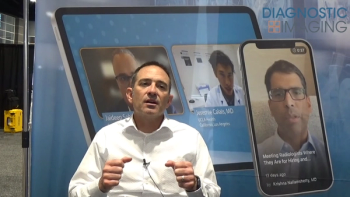
Emerging Trends with Burnout in Radiology: An Interview with Chris Mattern, MD, Part 2

In the second part of a recent interview, Chris Mattern. M.D., discussed the increasing burden of non-clinical tasks upon radiologist workloads and the potential of the emerging enterprise imaging platform MosaicOS to address efficiency and restore the focus on clinical care.
Radiologists have absorbed a fair amount of work beyond the interpretation of imaging, noted Chris Mattern, M.D. in a recent interview.
There may be some organizing of the radiology report on the PACS system, following up on phone calls with referring docs, tracking down a comparison study or correcting a transcription from voice recognition software. Some data has suggested that up to 30 percent of a radiologist’s time is spent doing various clerical duties, according to Dr. Mattern.
“A lot of that is not folks working top of license,” noted Dr. Mattern, the associate chief medical officer for radiologist experience at Radiology Partners.
In a recent American Medical Association (AMA) survey examining topics such as job satisfaction and burnout, physicians cited enhanced workflow efficiency as the top resource needed to stay in their jobs and maintain their workload.
With these considerations in mind, Radiology Partners recently launched the
Through the use of generative AI, MosaicOS significantly streamlines radiology reporting, according to Dr. Mattern. Within the first week of using MosaicOS, Dr. Mattern conceded that he was surprised to realize “how much mental energy I was putting into being the transcriptionist.” After two months with MosaicOS, Dr. Mattern has noticed improved productivity in comparison to previously looking back and forth at voice recognition software when completing radiology reports.
“I can just say my findings, and then I tell it to process the report. Meanwhile, I'm focused straight ahead on the images the whole time, which is also nice and allows me to stay more focused on the thing that I should be focused on, which is the images.,” maintained Dr. Mattern.
(Editor’s note: For related content, see “
For more insights from Dr. Mattern, watch the video below.
Newsletter
Stay at the forefront of radiology with the Diagnostic Imaging newsletter, delivering the latest news, clinical insights, and imaging advancements for today’s radiologists.




























